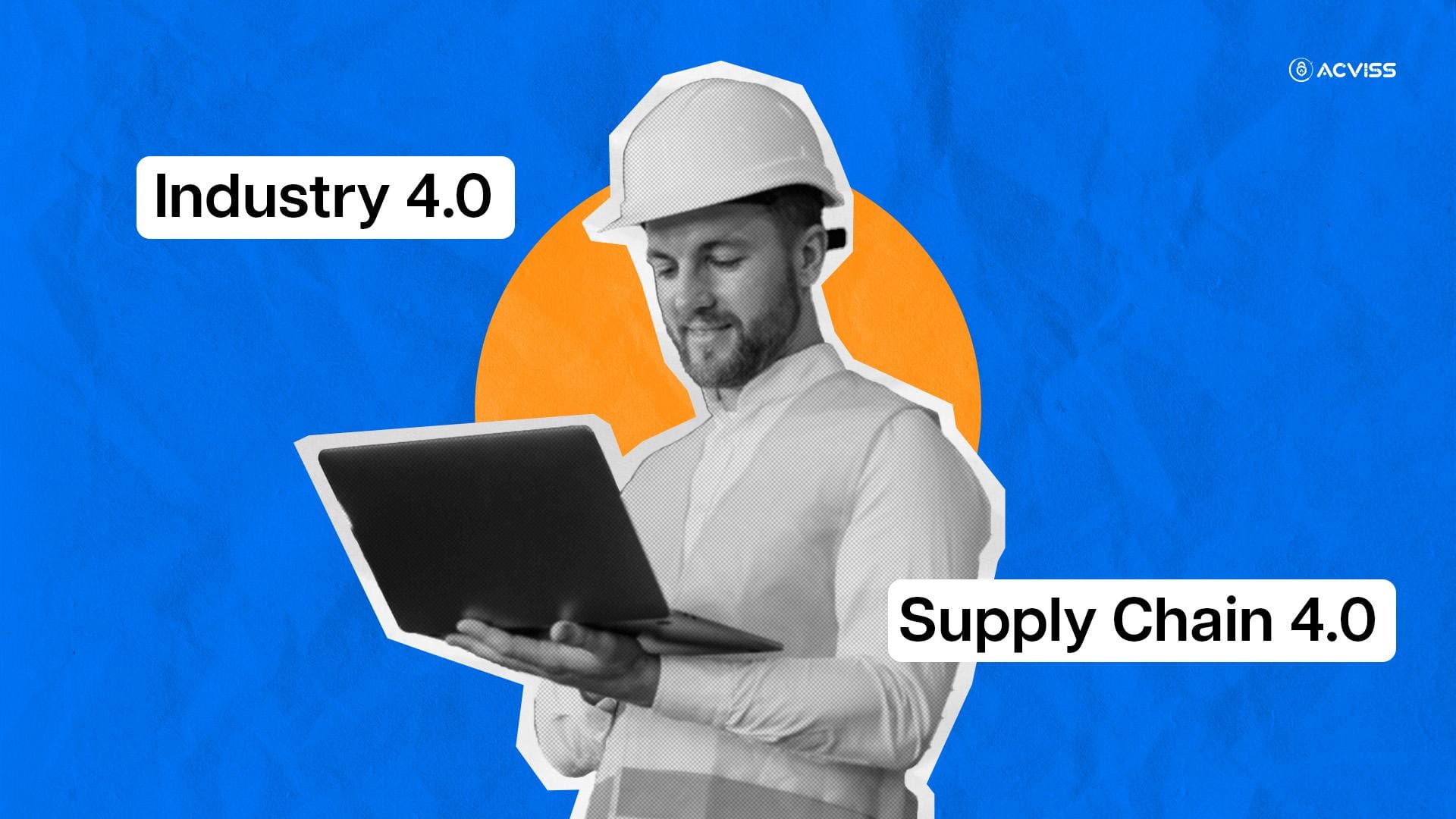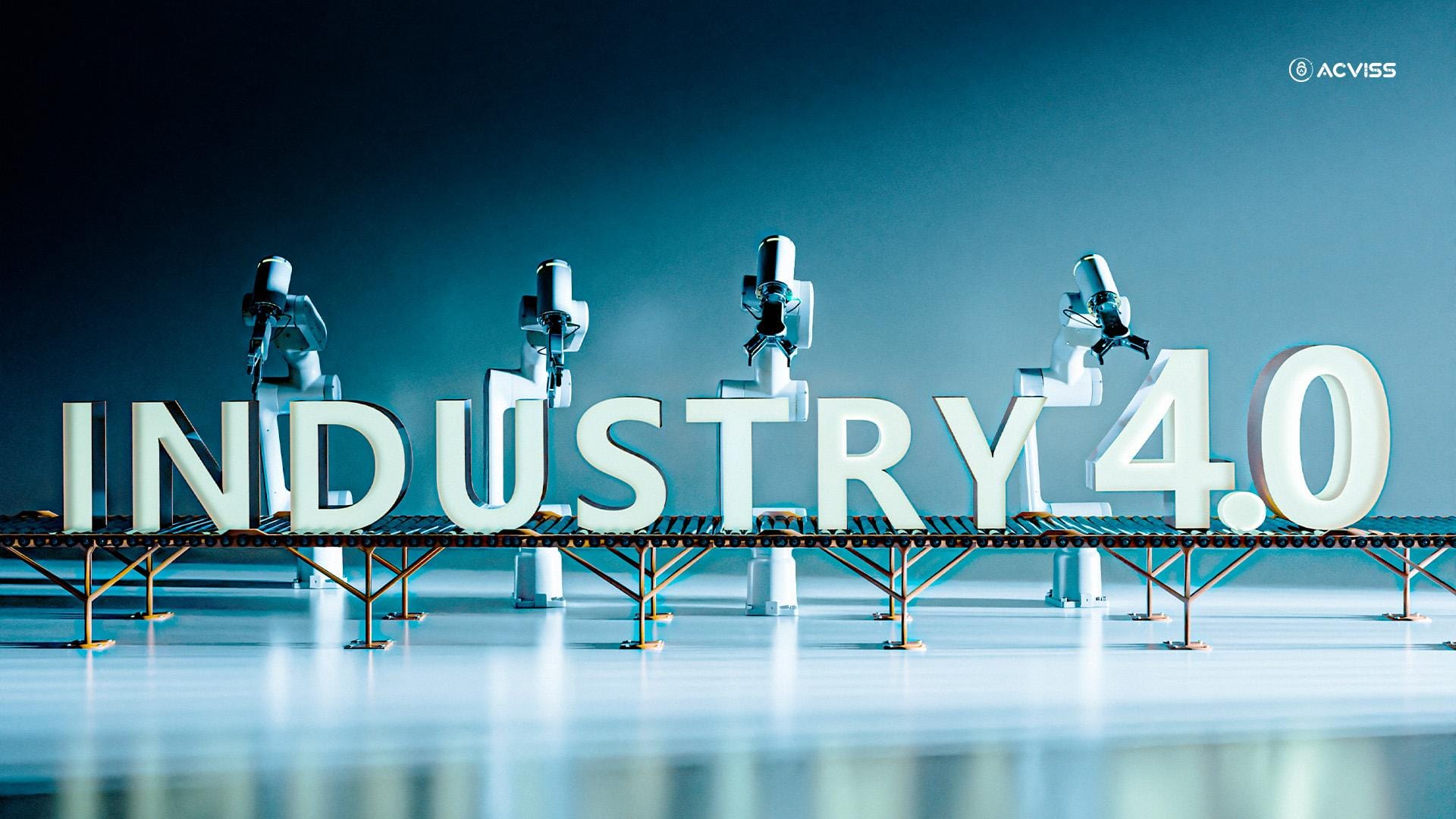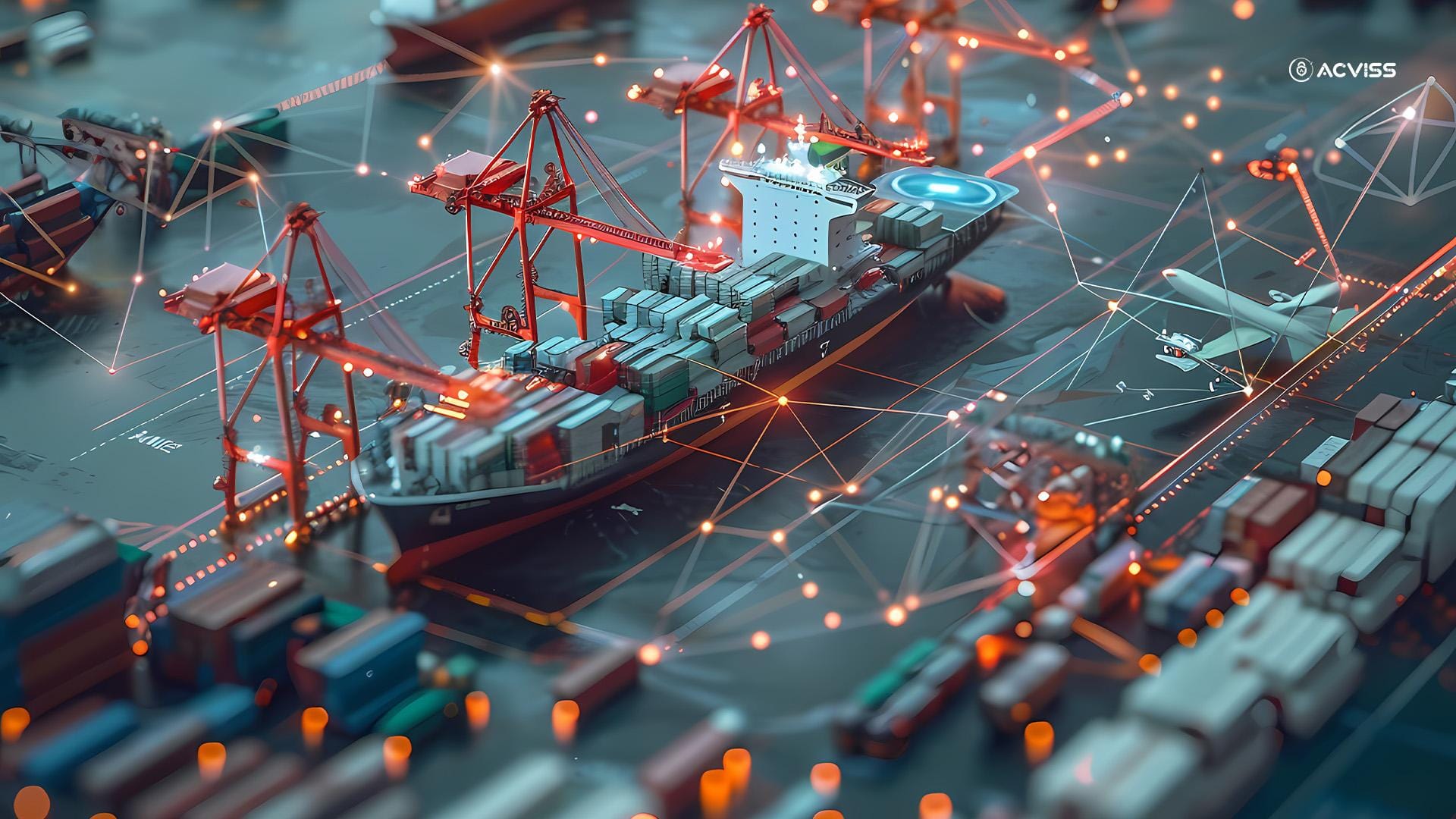Industry 4.0 and Supply Chain 4.0: Technologies, Benefits, and Challenges

From steam engines to smart factories, the world has come a long way through four distinct industrial revolutions.
- Industry 1.0 (late 18th century): Introduced mechanisation powered by water and steam.
- Industry 2.0 (late 19th century): Brought mass production and electricity to the factory floor.
- Industry 3.0 (late 20th century): Ushered in automation through computers and electronics.
- Industry 4.0 (early 21st century – ongoing): Integrates digital technologies like IoT, AI, robotics, and cyber-physical systems into manufacturing.
According to the World Economic Forum, over 70% of global manufacturers are exploring or investing in Industry 4.0 technologies to stay competitive and resilient in a fast-evolving market.
So, why does Industry 4.0 matter now more than ever?
Because today’s businesses demand more than just efficiency, they need intelligence, automation, and transparency. This is especially critical in the supply chain, where real-time decisions, traceability, and product safety can make or break a brand.
In this blog, we’ll look into Industry 4.0 and Supply Chain 4.0, breaking down what they mean, how they work, and why they’re essential for modern manufacturing. Whether you're an enterprise or an MSME, this guide will help you understand how digital transformation can shape the future of supply chains, brand protection, and business growth.
Table of Contents
- What is Industry 4.0?
- Key Goals of Industry 4.0
- Core Technologies Behind Industry 4.0
- Challenges in Industry 4.0 Adoption
- What is Supply Chain 4.0?
- Impact on Product Safety & Brand Protection
- Role of Acviss in the Industry 4.0 / Supply Chain 4.0 Ecosystem
- Conclusion
What is Industry 4.0?

Industry 4.0 refers to the Fourth Industrial Revolution, a new era of manufacturing driven by digital integration. At its core, it combines cyber-physical systems, Industrial Internet of Things (IIoT), Artificial Intelligence, machine learning, and robotics to create smart, autonomous, and connected production environments.
How is it Different From Previous Revolutions?
Each industrial revolution brought a major shift in how we produce goods:
- Industry 1.0: Mechanisation using steam and water power
- Industry 2.0: Mass production enabled by electricity and assembly lines
- Industry 3.0: Automation through computers and electronics
- Industry 4.0: Intelligent automation powered by real-time data, connected devices, and adaptive systems
Unlike earlier phases that focused on physical labour or basic automation, Industry 4.0 adds self-optimisation, data-driven insights, and machine-to-machine communication.
Key Goals of Industry 4.0
- Smart Factories: Facilities that monitor and adapt processes in real-time using sensors, IoT, and AI
- Greater Efficiency: Minimising waste, downtime, and manual intervention
- Predictive Maintenance: Anticipating equipment failures before they happen through data analysis
- Personalised Production: Enabling customisation at scale without sacrificing speed
- Scalability & Flexibility: Quickly adapting to market changes or disruptions
In short, Industry 4.0 is about turning factories into intelligent ecosystems that are more responsive, sustainable, and secure, a crucial evolution in today's competitive landscape.
Core Technologies Behind Industry 4.0
Industry 4.0 is powered by a network of interconnected technologies that enable real-time decision-making, autonomous operations, and seamless integration across the value chain. Below are the foundational technologies shaping this digital revolution:
1. Industrial IoT (IIoT)
Industrial IoT connects machines, sensors, and systems across a factory or supply chain to collect and exchange real-time data.
- Enables predictive maintenance, remote monitoring, and process optimisation
- Enhances product safety and traceability by providing continuous visibility across operations
2. Artificial Intelligence & Machine Learning
AI systems process vast amounts of data to detect patterns, optimise workflows, and automate decisions.
- Used in predictive analytics, quality control, and autonomous production
- Learns and improves over time, reducing manual intervention
3. Robotics & Automation
Advanced robots can now perform complex tasks with high precision and adapt to changing environments.
- Increases operational efficiency and consistency
- Reduces human error and labour-intensive activities
4. Digital Twins
A digital twin is a virtual replica of a physical system, be it a machine, production line, or entire factory.
- Allows simulation, testing, and performance monitoring without interrupting real-world operations
- Vital for proactive maintenance and process optimisation in manufacturing
5. Big Data & Analytics
With data flowing in from various connected devices, big data analytics helps make sense of it all.
- Supports real-time decision-making and performance tracking
- Identifies inefficiencies, trends, and potential risks across production
6. Cloud Computing & Edge Devices
Cloud platforms provide scalable computing power and centralised data access, while edge devices process data closer to the source.
- Reduces latency and enables faster insights
- Essential for connected, remote, and multi-site operations
7. Cyber-Physical Systems (CPS)
These systems integrate computation, networking, and physical processes into a seamless loop.
- Machines can make decisions and react autonomously in real-time
- Forms the backbone of smart factories and self-regulating environments
These technologies play a critical role in making manufacturing smarter, safer, and more agile. It lays the groundwork for next-gen factories and resilient supply chains.
Challenges in Industry 4.0 Adoption
Industry 4.0 is no doubt extraordinary. But its adoption still has many roadblocks, especially for small and mid-sized businesses. These challenges often shadow the benefits of digital transformation.
1. High Costs and Technical Complexity
- Implementing Industry 4.0 solutions requires major upfront investments in hardware, software, and integration.
- Many MSMEs struggle to afford advanced automation, IoT infrastructure, or AI systems.
- Long ROI cycles can make such projects harder to justify financially.
2. Skills and Infrastructure Gaps
- There’s a growing need for skilled professionals in AI, data analytics, robotics, and cybersecurity.
- Existing employees often lack the training to operate or maintain these systems.
- Many legacy factories lack the digital infrastructure to support modern systems.
3. Data Privacy and Cybersecurity Risks

- Connected systems create larger attack surfaces and expose sensitive data to new threats.
- Cyber-physical systems, if compromised, can shut down production or endanger safety.
- Companies must invest in robust cybersecurity and compliance frameworks.
4. Resistance to Change in Traditional Sectors
- Cultural inertia and fear of job displacement often slow down digital transformation.
- Leadership in traditional industries may be hesitant to shift from tried-and-tested methods.
- Change management and clear communication become crucial during transformation.
Addressing these challenges requires a combination of strategic planning, workforce development, and the right tech partners to guide the transition. We will get into that, but before that, let’s get to another important topic of this blog, Supply Chain 4.0
What is Supply Chain 4.0?

Supply Chain 4.0 refers to the next-generation transformation of traditional supply chains using Industry 4.0 technologies. It’s about creating a connected, intelligent, and highly responsive supply chain that enables real-time decision-making and end-to-end transparency.
Key Characteristics of Supply Chain 4.0
- Digitally Connected: Uses sensors, IoT, and cloud platforms to link every part of the supply chain, from raw materials to delivery.
- Real-Time Operations: Access to live data helps businesses monitor stock levels, shipment status, and demand fluctuations instantly.
- Automation-Driven: Replaces manual processes with robotics, AI, and advanced software to reduce errors and increase speed.
- Predictive and Adaptive: Leverages analytics and machine learning to forecast demand, anticipate disruptions, and plan proactively.
Application Across the Supply Chain
Supply Chain 4.0 applies intelligent systems across all stages:
- Procurement: Automated sourcing and vendor management using digital platforms.
- Production: Integration with smart factories for synchronised manufacturing.
- Logistics: Real-time fleet tracking and warehouse automation for faster fulfilment.
- Customer Delivery: Accurate, trackable shipments that enhance customer experience.
Benefits of Supply Chain 4.0
- Faster Time-to-Market through process automation and streamlined operations.
- Increased Visibility for better tracking, planning, and compliance.
- Greater Traceability of products and materials to improve safety and reduce counterfeiting.
- Enhanced Risk Management by predicting and responding to disruptions in real time.
Impact on Product Safety & Brand Protection
In an increasingly globalised and fragmented supply chain, counterfeit risks are rising. As businesses expand their operations across borders, the complexity of managing product authenticity grows. Counterfeit products not only pose a risk to consumer health and safety but also significantly damage brand reputation and trust. This is where Industry 4.0 technologies play a crucial role in enhancing product safety and protecting brands.
1. Rise in Counterfeit Risks

- Challenge: Global supply chains are often disjointed, with multiple stakeholders involved in the movement of goods from raw materials to end products. This fragmentation increases the likelihood of counterfeit products entering the market.
- Impact: Counterfeit goods not only affect the brand’s image but also harm consumers. Companies lose revenue, and consumers risk exposure to substandard or dangerous products.
2. How Industry 4.0 Supports Brand Protection
Industry 4.0 technologies help safeguard brand integrity by enabling smarter, more secure, and transparent operations. These technologies provide the tools needed to verify product authenticity and ensure the security of products throughout their lifecycle.
a) Real-Time Tracking with IoT
- Impact: Internet of Things (IoT) devices allow products to be tracked at every step of their journey, from manufacturing to delivery. This real-time visibility ensures that any discrepancies or irregularities can be flagged immediately, preventing counterfeit products from entering the supply chain.
- Benefit: IoT enhances product safety and assures customers that the product they purchase is genuine.
b) Predictive Alerts Using AI
- Impact: Artificial Intelligence (AI) systems can analyse vast amounts of data to identify patterns and predict potential risks in the supply chain. AI-powered systems can alert businesses to possible security breaches or counterfeit attempts before they occur.
- Benefit: This proactive approach to brand protection minimises risks and helps companies react swiftly to emerging threats.
c) Authenticity via Smart Packaging, QR Codes, and NFC
- Impact: Technologies such as smart packaging, QR codes, and Near Field Communication (NFC) tags allow consumers to easily verify the authenticity of products. By scanning a QR code or using an NFC-enabled device, customers can instantly access product details, verify its origin, and confirm its authenticity.
- Benefit: These systems enhance consumer confidence, ensuring they are buying legitimate products and protecting brands from the damaging effects of counterfeiting.
3. Importance of Secure, Transparent, Traceable Supply Chains

- Challenge: In traditional supply chains, verifying the authenticity of products at every stage can be challenging. Counterfeiting thrives in environments where visibility is limited.
- Impact: A secure, transparent, and traceable supply chain is critical for ensuring that products are genuine and have not been tampered with. Industry 4.0 technologies provide the tools for complete traceability, ensuring that each product’s journey is documented and transparent from start to finish.
By adopting these advanced technologies, businesses not only protect their brand but also build trust with consumers. Brands that invest in authenticity and transparency through smart factories and product verification technologies like QR codes and NFC tags can differentiate themselves in an increasingly competitive marketplace.
Role of Acviss in the Industry 4.0 / Supply Chain 4.0 Ecosystem
Acviss solutions are built to enhance the effectiveness of Industry 4.0 and Supply Chain 4.0:
- Traceability Systems: Seamlessly integrate into connected supply chains, ensuring real-time tracking and complete visibility.
- QR Code Authentication: Protect product integrity with secure, verifiable digital labels that ensure authenticity.
- Real-Time Dashboards & Digital Verification: Equip businesses with actionable insights to make informed decisions on product safety and supply chain transparency.
Acviss products, such as Origin by Acviss, empower brands to ensure secure, transparent, and efficient operations, driving growth in the Industry 4.0 landscape.
Conclusion
As we navigate Industry 4.0 and Supply Chain 4.0, one thing becomes clear: the transformative technologies behind these advancements are not just reshaping industries, they're defining them. From automation to real-time tracking, businesses must evolve to stay competitive in an increasingly connected world.
There are lots of benefits for organisations embracing this shift: efficiency, speed, and enhanced security. The time to leverage these technologies is now, or risk being left behind. Industry 4.0 is not a distant future; it's happening today.
Whether you're a manufacturer, a supplier, or a logistics company, Industry 4.0 and Supply Chain 4.0 are changing the game. And solutions like Acviss can help you navigate this transformation, enabling secure, traceable, and efficient operations that power your growth.
Get in touch with us and explore what the future holds for your business and the steps you can take to remain ahead of the curve, because innovation waits for no one.
